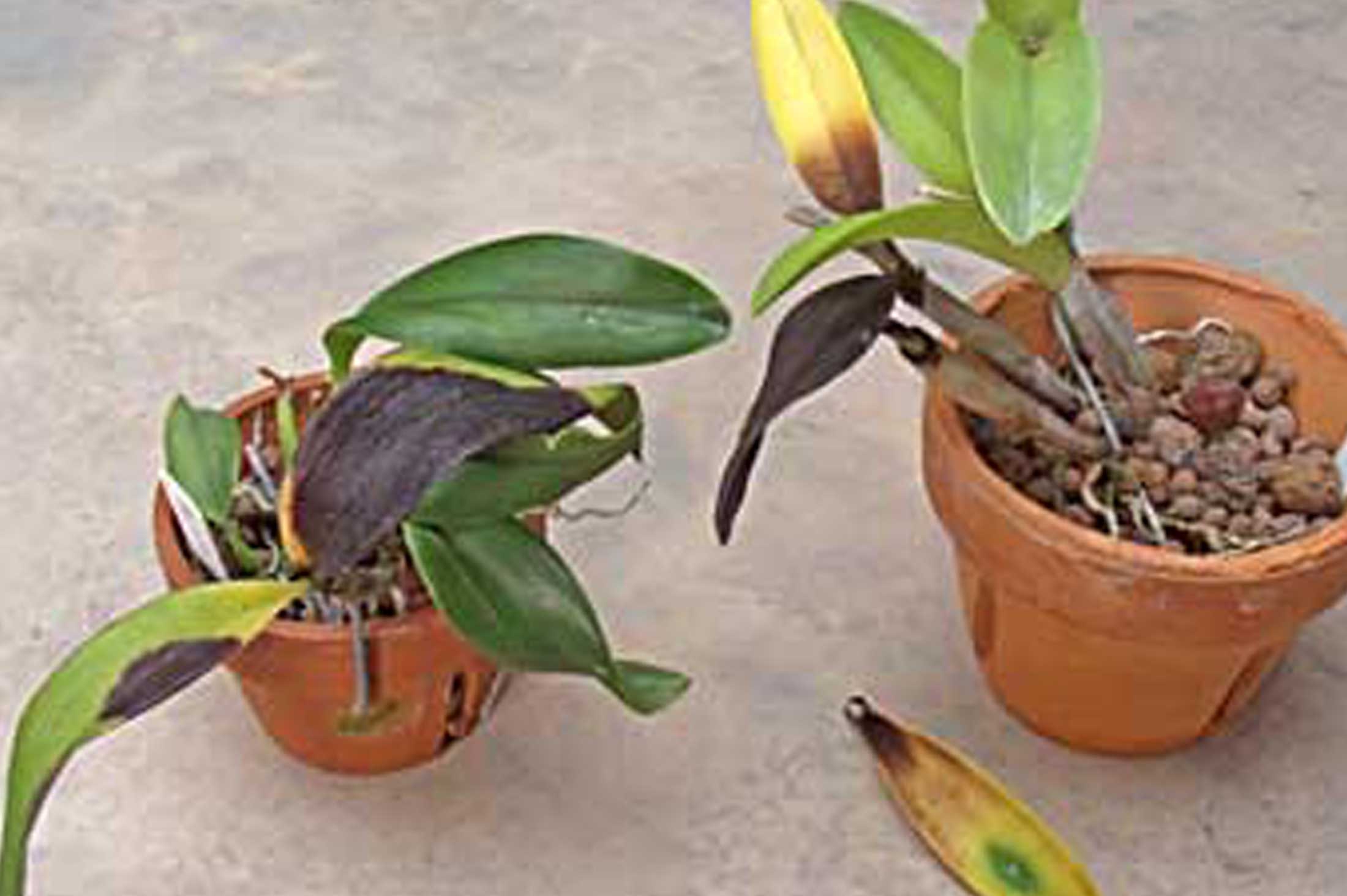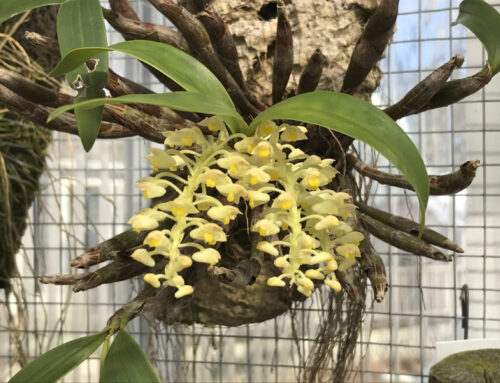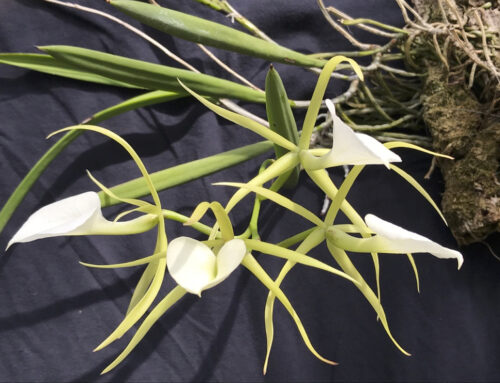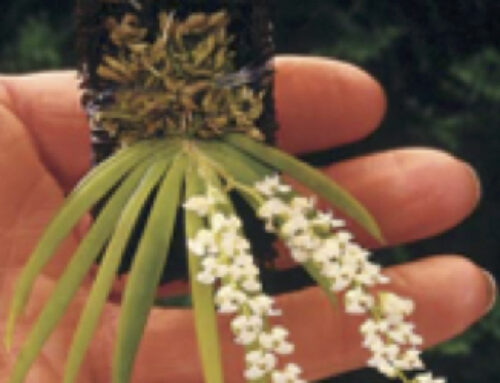Here are some helpful hints to combat fungus, bacteria, and root rot:
For fungus and bacteria
Rots commonly make their appearance on orchid leaves, often showing up as brown spots or blotches that grow in size as time goes on. These need to be dealt with quickly. Using a sterilized, single-edged razor blade or other sharp, sterilized implement, cut away the affected area by cutting into the healthy plant tissue surrounding it. Then, try the following:
- Cinnamon, dusted liberally around the cut. Cinnamon will not only dry away any fungal infections, it has bactericidal properties as well. Be careful not to apply cinnamon to sensitive orchid roots, as its drying effect can often kill them.
- Listerine, used full strength as a spray, works wonders for bacterial infections, as does Neosporin ointment, applied directly to the affected area.
- Household bleach. Be *very careful* with this: chlorine is extremely toxic to, and can kill, orchid plants. Mix *no stronger* than one teaspoon per gallon of water and spray the plant completely for a highly effective bactericide, fungicide, and algaecide. Twelve to twenty four hours later, flush the plant and its pot with clear water! Do not forget this step!
- Hydrogen peroxide, applied full-strength to leaves or poured directly into a plant’s “crown” or growing center, effectively kills the fungus responsible for crown rot.
For root rot
- Using sterilized scissors or shears, prune away any dead, dark brown and “mushy” roots.
- Dip the remaining roots into a bowl filled with 2 parts hydrogen peroxide, 1 part water.
- Let stand for 30 minutes.
- Transfer the plant to a bowl filled with the fertilizer solution you normally use.
- Let stand for 30 minutes.
- Soak a wadded up paper towel with water.
- Place the plant and wet paper towel into a Ziploc bag, being careful not to let the paper towel come into contact with the plant.
- Seal the bag, and place in a deeply shaded, out of the way spot for up to six weeks. The rot will have been eliminated, and new roots should begin to form.






